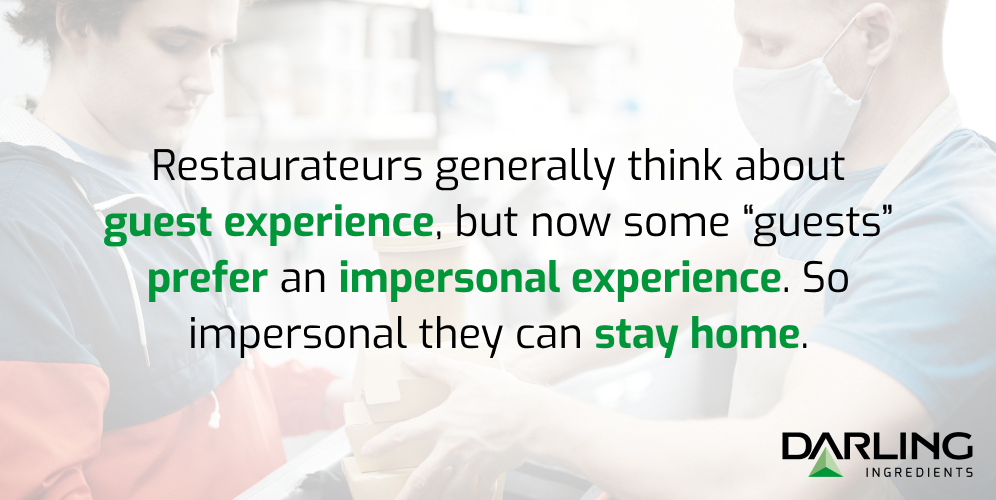Why You Should Think About a Ghost Kitchen
The traditional restaurant model has been ingrained in everyday life. Restaurateurs generally think about guest experience, but now some “guests” prefer an impersonal experience. So impersonal they can stay home.
While you think about breaking into the restaurant industry, here’s why you should take a few minutes to consider opening a ghost kitchen.
Low Overhead Costs
Ghost kitchens are cheaper to open than a traditional restaurant. You won’t need as much staff, and you don’t need to worry about the seating area. It’s literally just a kitchen.
You won’t need to spend money on decorations, aesthetic touch-ups, or plates and silverware. You can keep costs low and still make culinary wonders with a ghost kitchen.
Marketing is Simple
There are two things your customers will want to know when they discover your ghost kitchen:
- What kind of food you make
- What your rating is
As long as your kitchen is appearing on delivery apps like Uber Eats, you’ll probably do fine. However, to drive your ghost kitchens visibility and sales you’ll need:
- Fast delivery
- Good food
You’ll have the advantage over traditional restaurants. 81% of Canadians would order delivery from a restaurant they’ve never visited in person. Your ghost kitchen may also be the only delivery option for that cuisine available in your area.

How to Start a Ghost Kitchen
Running a ghost kitchen is similar to running any other commercial kitchen. With less to manage, it could be considered simpler.
However, getting your kitchen running always requires advanced planning. Follow these steps to make sure starting your ghost kitchen goes as smoothly as possible.
1. Create a Business Plan
It’s not a good idea to open a virtual kitchen without a business plan. It may seem tedious and overbearing, but setting up a plan will help you secure finances as well as keep your business on track.
Your business plan should include a:
- Mission statement
- Goals
- Marketing strategies
- How you plan to use your finances
You should have a finger on the pulse of the dining trends in your area. Find out if there’s a demand for your cuisine, and build a brand alongside your ghost kitchen’s menu.

2. Get Your Licencing
A ghost kitchen is much less formal than a traditional restaurant, but they still require proper licencing.
Make sure you’re practicing up-to-date safety requirements and food safety practices. Follow these regulations and secure the proper licences before you start contacting delivery platforms.
3. Perfect Your Day-to-Day Operations
Investing time into perfecting your operations will save you time when the orders start coming in.
Make sure your POS is the best fit for your kitchen. A good POS will keep orders organized and make your kitchen more efficient.
You’ll also want to figure out exactly how many ingredients your kitchen needs. This will take time, but the sooner you figure it out, the less food you’ll waste, and the more money you’ll save.
How many people will you need to man your kitchen? Do you plan on hiring delivery drivers or using a delivery app? Figure these things out before you open.
Precision is key in the delivery game. Getting orders wrong is much more frustrating for the customer when the restaurant is a drive away. They want to stay in so be specific about what will happen to food once it’s prepped and ready to be picked up.
Chances are your dark kitchen will include a fryer or two. Consider going the extra mile by perfecting your used cooking collection, storage, and recycling by partnering with Darling Ingredients Canada.
4. Make Sure Customers Know About You
Your ghost kitchen will be useless if no one can see it. Even before you start taking orders, you need to start making your kitchen visible.
Some virtual kitchens have a social media presence. Most rely on delivery apps alone, but creating brand awareness can solidify your kitchen’s presence. Push yourself in front of potential customers as early as possible.
You won’t have a storefront for customers to window shop at. Therefore, you must be active online. A highly visible ghost kitchen will implement:
- Social media
- Responding to reviews
- Partnering with as many delivery apps as possible
Don’t forget the power of being a part of your community. Attend food festivals and offer samples at gatherings.
3 Ghost Kitchen Management Tips to Consider
Once you have the vision, stay focused on running a quality restaurant. Outside of this, there are a few things you can do to boost your business.

1. Focus on the Food
Not having to worry about managing a seating area will give you more time to create signature dishes. Don’t treat your ghost kitchen like a cash grab, treat it like an authentic restaurant.
Take some time to experiment and use fresh ingredients. If you can deliver elevated cuisine while your customers stay home, you’re in a good place.
You can’t rely on the dining experience, you can only rely on the food — make it good.
2. Location, location, location
Location affects ghost kitchens just as much as traditional restaurants. Yes, you don’t need to worry about parking or walk-in clientele. However, you do need to be close to your customers.
Customers prefer to order food that’s 5 minutes away rather than 30 minutes away. It’s faster and cheaper for them.
Try to find a location that’s central to neighborhoods, apartment complexes, or main roads.
3. Find Sustainable Waste Solutions
Like every commercial kitchen, you’ll need a way to deal with your waste. However, ghost kitchens produce a bit more waste due to the inability to use multiple use dishes and silverware.
Switch out single-use plastics with eco-friendly options and try not to overbuy.
Used cooking oil is a common form of waste that cannot be disposed of by regular means.
The best way to get rid of used cooking oil is to partner with a used cooking oil recycler. Darling Ingredients Canada is a used cooking oil partner that offers several industry-leading storage and transportation options.
Darling Ingredients Canada’s services are perfect for ghost kitchens that want to minimize their footprint while maximizing their potential.
